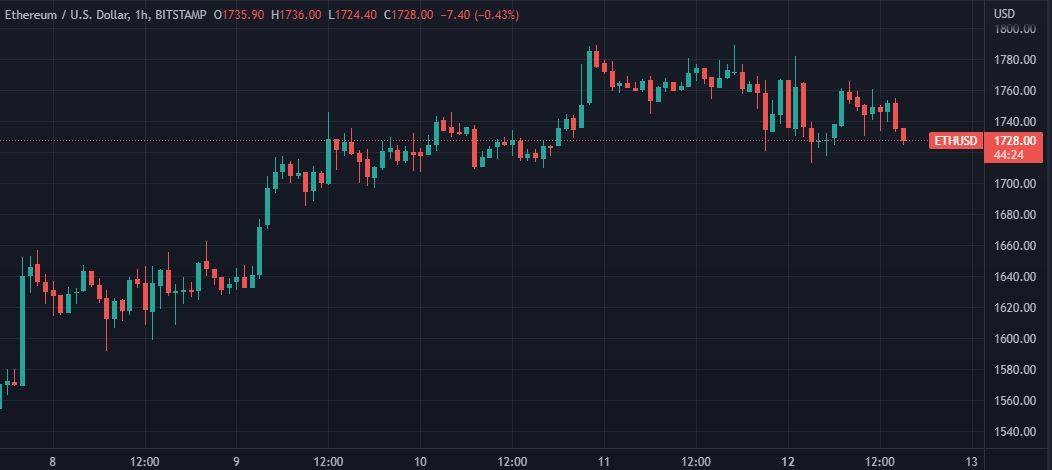Crypto traders are usually eager to get into trading and start making money without considering their account size and how to manage their money. As a result, it is common for novice players to play, looking for a jackpot, while paying little attention to the practices that drive consistency. If that sounds like you, it’s time to look at some risk management practices that, if used well, will protect you and help you stay in the market without ruining your account.
What is Crypto Risk Management?
There is no doubt that you will experience negative events when trading crypto. By negative events we mean trades that go against the desired result, unusual price increases, mistakes and many more unpleasant events. Risk is normal in trading; every crypto trader takes risk. Crypto futures traders take more risk because they tend to use leverage regularly. Failure to follow risk management practices affects your trading balance and you may even lose all your capital.
Risk management practices capture how you intend to manage your risk when trading. They protect you from the downside of your trades and keep you in control of your losses. The rules will not only protect you, but they will also help you create the desired result when the right crypto trading strategies are in place.
8 Practices for managing crypto-risk
Below are some risk management practices that you should apply to your trades.
1. Have a solid trading plan
One of the biggest mistakes you can make as a trader is to start trading based on your gut feeling or instinct. We cannot deny that you can get some positive results this way, but it can only be a result of luck and nothing more. You need a proper plan to manage your risk and get consistent results.
Your trading plan is your organized approach to trading. It is a system you have created through your experience in the market to give you the security and results you want. Your trading plan should cover when to open trades, close trades, how much risk you should take per trade, the risk-to-reward ratio and more. Having all these things planned makes trading easier for you and helps you manage your money well.
2. Only invest what you can afford to lose
This is an often overlooked aspect of trading because many traders mistakenly believe that nothing can happen to them and that they have everything under control.
The question is, why should you follow this rule? As a simple answer: because you can lose your capital. Also, trading an amount you cannot afford to lose will result in pressure and emotional stress, which can compromise your decisions and lead to more mistakes.
The crypto market is volatile and it is better to trade only a small amount of your disposable income. It hurts to lose money and more painful when the money is meant for another purpose. For this reason, your trading capital must be usable.
3. Increase your positions
The idea behind position sizing is that you should measure how much you risk per trade. You should not risk 100% of your capital on a single trade. Successful traders prefer to risk a fixed percentage of their capital per trade.
Some trading experts recommend that traders, especially beginners, should not risk more than 1% of their account balance on a single trade. This practice will help you limit your risk and give you control over your trading capital. Some traders consistently risk 2% per trade and some risk 3% per trade. Some also believe in keeping no more than 5% of their capital in open trades, no matter how many opportunities they see.
Unexpected price fluctuations occur in the market. If you risk more than you can handle, such fluctuations can cause you to panic and push you to make irrational decisions.
4. Limit the use of leverage
Leverage allows you to trade with borrowed capital. As a result, your profits can be magnified, but so can your losses. The latter increases the need to understand how leverage works, its impact on your trading results, and how best to manage it.
Futures traders are often tempted to use very high leverage so that they can make a lot of money. But unfortunately, they forget that a small mistake can also push them to deep losses.
5. Always calculate the risk-to-reward ratio
The risk-to-reward ratio refers to the risk versus the potential return expected from a trade. You should measure the risk-to-reward ratio of a trade before executing it. If you can determine the potential outcome against the risk, you are more likely to go for trades with a high probability of success.
When calculating the risk-to-reward ratio, traders usually go for a ratio of 1:1.5 to 1:3. A ratio of 1:1.5 means that the performance target will yield an amount that is 1:1.5 times greater than the risk. Any trade that ends at 1:1 is said to break even, as there is no profit or loss, while any that show a risk-to-reward ratio of less than 1:1 should not be executed.
6. Use Stop Loss Orders
The stop loss order helps to specify a starting point in the market. It limits your losses when a trade goes against your prediction. You will have losses at some point and there is nothing you can do about it. You can control your losses by using a stop loss order every time you trade.
Some people think they don’t need to set a stop loss because they know the right time to exit the market. But they forget or don’t know that the market is full of surprises and can be easily distracted. In addition, not having a stop loss order makes it difficult to predetermine the amount you will lose in a bad trade.
Stop loss helps ensure you don’t exit trades too early and miss out on potential profits. They also protect you from emotional trading and the following cognitive biases that can lead to poor decision making.
7. Secure profit with Take Profit
Take profit works in the same way as stop loss, with the main difference being that it is used to secure profit and not to stop a loss. The tool is designed to take profit when the price reaches the specified point.
Having a clear expectation of your trading profits helps you predetermine the appropriate risk you should take. In addition, it will help you maintain discipline during trades.
8. Have realistic expectations
Having realistic expectations is key to managing your risks. You cannot earn 40% monthly profit without risking too much of your capital. Having such a goal will always cause you to overtrade or use too much leverage, which can lead to huge losses. Setting more realistic goals will help give you control over trading emotions such as greed, fear and hope.
These practices are important
Risk management is very important to do well in trading and should be taken seriously by beginners and struggling traders. As simple as they may seem, not putting them in place can leave you struggling to trade.
The difference between successful and struggling traders is not always about the trading strategies used, but rather their simplicity. Successful traders are usually simple enough to follow their trading plans and have established risk management procedures that they follow consistently.
The information on this website does not constitute financial advice, investment advice or trading advice and should not be considered as such. MakeUseOf does not advise on any trading or investment matters and does not recommend that any cryptocurrency should be bought or sold, ever. Always perform your own due diligence and consult a licensed financial advisor for investment advice.


























